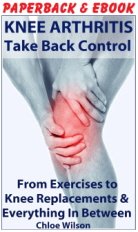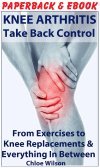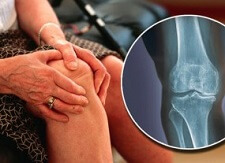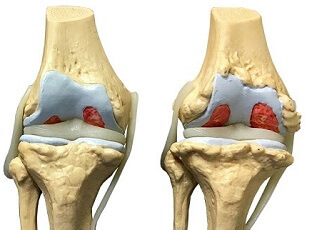- Home
- Knee Surgery
- Knee Replacements
- Recovery
Knee Replacement Recovery Time
Written By: Chloe Wilson, BSc(Hons) Physiotherapy
Reviewed by: KPE Medical Review Board
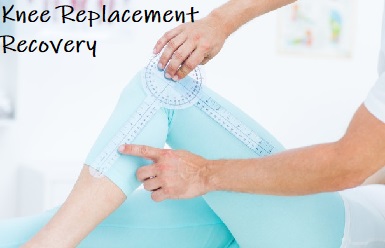
Knee replacement recovery time will vary for each person.
It will partly depend on how well you prepared for surgery and what you are aiming to get back to, but here you will find a good guide as to what to expect.
Most people make an excellent knee replacement surgery recovery and are up and about very quickly. Gone are the days when people were in hospital for two weeks after their surgery. Now it's up and about straight away and home in just a few days.
Knee replacement recovery begins before your surgery. You will have a rehab program to work on which you can actually start before your operation to get your muscles in the best shape possible which will really help. The people who make the best total knee replacement recovery are the ones who start the rehab process before their operation.
Knee Replacement Recovery Time Guide
Here we will look at total knee replacement recovery time, including what happens at what stage post-op and how long it typically takes to get back to your usual activity.
If are having or have had only one side of your knee replaced, visit the partial knee replacement recovery time section instead to found out how it will be for you.
Knee replacement recovery time will vary from person to person, and may be affected by:
- Severity of arthritis
- Activity levels prior to surgery
- Weight
- Age
- Compliance with exercises pre and post-op
Let's have a look at a typical knee replacement recovery time process.
1. The First Week
After total knee replacement surgery you will be able to get out of bed and fully weight bear on your new knee within 24 hours. Don't worry, you won't be alone, the physiotherapists will help you.
You may feel slightly dizzy the first few times you get up after your knee replacement and may find it a bit awkward getting in and out of bed but this will quickly pass. Your physio will give you a frame, crutches or sticks to use for the first few
days, depending on what technique the surgeon used and how much pain you are in.
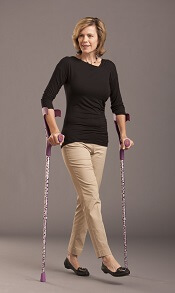
You will start your knee replacement exercises straight away, i.e. the same day as your operation, and will progress through the rehab program as instructed by a physiotherapist over the next few weeks.
Starting exercises as early as possible, and sticking to them religiously really helps speed up knee replacement recovery time. It might feel uncomfortable to start with, but it will make all the difference.
You may also use a CPM machine (continuous passive motion). This is a specially designed device that sits underneath your leg and bends the knee up and down for you. It can be set to bend a straighten through different ranges so as your knee movement improves, it can be adjusted to allow a great range of movement.
A CPM should be used alongside knee exercises, not as a substitute as it is really important that the muscles are doing some work too so you can make the best knee replacement recovery.
2. Discharge Home
People are normally discharged from hospital after 2-5 days (sometimes longer) after a knee replacement depending on how they are doing. Some people even manage to get home the same day as their operation!
Before you can go home after a knee replacement, you will be able to:
- Get in and out of bed by yourself
- Walk safely with or without crutches/sticks/frame
- Climb steps and stairs: unless you don’t have any or are planning to sleep downstairs
- Stretch your knee out fully straight: some doctors will allow you to go home before achieving full extension
- Bend your knee well, preferably at least 90°
Related Article: Top Tips On Getting Up & Down Stairs >
3. The First Month
Once you are discharged from hospital, you will continue your knee replacement recovery at home. Your knee may well be sore and swollen after your knee replacement initially but the pain is often much less than before the surgery as you will no longer be getting any knee arthritis pain.
As the knee heals, your post-op knee replacement recovery pain will settle down, usually within a few weeks and you'll be advised on how to wean off your medication.
One of the best ways to reduce pain and improve range of motion after a knee replacement is to get any knee swelling down as quickly as possible using things like Ice and Tubigrip (a special compression bandage).
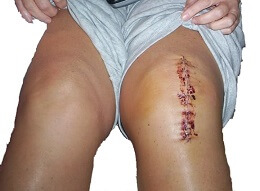
After about a month you should notice quite a dramatic improvement in your knee.
Knee replacement recovery time will be impacted by how well you comply with the recommended rehab programme. It is really important to be doing exercises to build up the strength and flexibility around your knee to gain the full benefit of the surgery (see the exercises for knee replacement section).
During this period of knee replacement recovery time be aware of:
- Wound Care: You must keep the wound clean and dry until the stitches are removed, usually after 7-10 days.
- Driving: You can drive after 4-6 weeks, as long as you can perform an emergency stop.
- Walking: You will be able to stop using any walking aids such as crutches or sticks as soon as you feel able – usually in a few days, and certainly by six weeks.
4. The First 3 Months
Beat Knee Arthritis
All the info you need about knee arthritis, top tips, exercises & loads more.
Rated 4.4/5
Find Out More
The next phase of knee replacement recovery time focuses on regaining full functional ability at your knee. Whilst you can do most things at this stage on your new knee there are a few things you need to be careful of.
For 6-8 weeks after knee replacement surgery you should avoid:
- Any pivoting (twisting) on your knee
- Kneeling
- Squatting
Other than this, you you will need to continue with your knee replacement rehab program for at least 3 months after knee replacement surgery, probably six months to get the best result from your operation.
You will be able to progress your exercises as your knee gets stronger and more flexible - visit the rehab section to find out more. The more you stick to your exercise program, the shorter your knee replacement recovery time is likely be.
Returning to Activities / Sports
With knee replacement recovery time is one of the biggest healers. Over time the swelling will reduce, your muscles will get stronger and your knee should free up becoming more flexible than beforehand.
It is important to take things easy for the first few weeks but after that, you can start thinking about returning to your favorite activities. Here are some helpful tips on knee replacement recovery time:
- You can resume most activities after 6-12 weeks, for example swimming
- Some activities should be carried out with care e.g. golf – don’t wear shoes with spikes
- Some activities are not advised following a total knee replacement as they put too much stress on the new knee joint. These include: jogging, contact sports e.g. basketball and football, squash, badminton, jumping activities and skiing. If you are unsure, discuss things with your doctor.
Pain and swelling can take up to 3 months to settle and knee replacement recovery time continues up to 2 years after your operation.
Knee Replacement Recovery Tips
Here's some top tips for four common questions about total knee replacement recovery time:
- How Long Does The Pain Last? Many people find they have less pain after their knee replacement as the arthritis pain is no longer there. The post-op pain usually settles down within 6-12 weeks although their may be some residual pain and swelling for up to a year.
- How Do I Sleep After A Knee Replacement? Typically people find it most comfy to sleep on a firm mattress, either lying on their back or on their side with a pillow between their legs.
- Can I Kneel Down With My Knee Replacement? Yes you can although it may be uncomfortable in which case use a cushion or knee pad. Kneeling won't cause any damage to the knee replacement and certainly won't delay your knee replacement recovery time.
- How Do I Make the Best Recovery? In order to make the best knee replacement recovery, follow all the advice from your doctor and physical therapist. Start exercises prior to surgery, get up and about as soon as possible, stick to your rehab program, take medications regularly when advised and keep going. There may be ups and downs along the way, but stay focused and positive
You can find the answers to loads more similar questions in the total knee replacement recovery questions section.
Equipment To Help
There are a number of pieces of equipment that can really help to improve knee replacement recovery time at different stages of the recovery process. You certainly won't need all of them, but you may find some very beneficial. If possible, it helps to get any piece of equipment you might need before you go in for your surgery so you are all set up and ready to go.
#CommissionsEarned from Amazon on qualifying purchases
1. Walking Aids
For the first few days you may benefit from using a walking frame or crutches to help you walk. These help to reduce the amount of weight going through your new knee and also help with balance and stability as you recover. In most cases these are only needed for a few days but some people prefer to keep using them longer term, particularly when they are out and about. There are a few different options to choose from:
Walking Frame Without Wheels
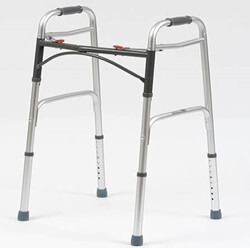
Zimmer Frame Walkers are the most stable type of frame to use as they have rubber feet which grip well to the floor so the frame doesn't roll away from you. You simply pick it up and place it in front of you and then step into the frame and then repeat the action.
They are usually provided by the hospital where you have your surgery but if not, they can be purchased for around $40/£40/€50. Find Out More >
Walking Frame With Wheels
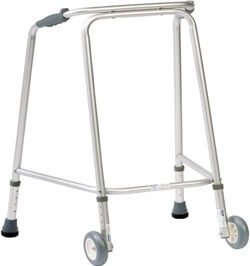
Walkers With Wheels are an excellent option after a knee replacement.
Similar to zimmer frames, they have wheels on the front legs and rubber stoppers on the back legs. This means you don't have to stop walking and pick the frame up each time you step forwards, you can simply push them forwards as you walk and the wheels roll the frame forwards, allowing for a normal walking pattern.
Wheeled Walking Frames are slightly less stable than frames without wheels, but if you push down through the back feet they usually stay in place well. They usually cost around $38/£45/€58. Find Out More >
Foldable Rollator With Seat
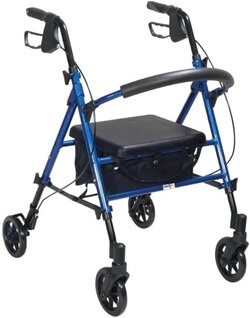
Foldable Rollator Walkers are an excellent option in the longer term knee replacement recovery time and can actually be really beneficial before surgery for when you are out and about.
These sturdy yet compact walkers have an in-built seat so if you find it difficult to walk or stand for long periods, you don't need to worry about finding somewhere to seat.
There is also usually a basket underneath the seat that you can put things in, really useful for if you're shopping. They typically fold down so you can easily fit them in the car. They also have brakes so you don't need to worry about them running away from you! Prices start at around $75/£70/€80. Find Out More >
Walking Sticks
During your knee replacement recovery time, it can be helpful to have one or two sticks to help with balance and confidence following surgery. Whilst sticks aren't designed for reducing the weight going through your knee, they will definitely help your balance, and they are a great visual tool to others around you to give you some space so you don't need to worry about being bumped into when you're out and about.
There are a whole range of styles on the market.
- Traditional Wooden walking sticks work well as long as they are cut to the right height.
- Foldable sticks are perfect if you want to pop them away when not using them. They are usually lightweight and adjustable height and are available in a whole range of colours.
- Pivot Sticks have a slightly wider base for extra support when walking which also crucially means the stick can stand up by itself, it won't fall over so no more struggling to pick it up off the floor!
- Quad Canes have a wider base, with four feet rather than one, making them super stable.
It is really important to make sure that the stick is the right height for you and that the ferrules, the feet on the bottom of the walking sticks are in good condition so that they do not slip.
2. Anti-Swelling
It is common to have have swelling after a knee replacement which can cause discomfort and may restrict knee movement. The sooner you can get the swelling down, the more comfortable your knee will feel, the more mvoement you will regain and the easier it will be to bend and straighten the knee and walk around. There are lots of things that can help with reducing swelling and speed up knee replacement recovery time.
Regular Ice
Regularly applying ice to your knee helps to reduce the blood flow to the joint and prevent excess fluid from accumulating in the joint. There are lots of different ways to apply ice to the knee including simple ice packs, resuable cold packs and Cryocuffs which combine continuous cold and compression to the knee. Find Out More >
Elevation Cushions
Keep the leg elevated can really help reduce swelling and knee replacement recovery time. Any time you are sitting down in those first few weeks after your knee replacement, you want to keep the leg elevated, ideally with the knee higher than your height and the knee well supported and cushioned. You can do this with cushions or pillows, but it is ofter easier to use a special leg elevation cushion, particularly overnight. Find Out More >
Summary
Knee replacement recovery time varies slightly from person to person but typically follows this pattern:
- Day 1: you should be able to get out of bed, walk around with assistance and start your exercises.
- Day 2-5: work on rehab program with physical therapist, practice walking and going up and down stairs (with or without walking aids). May use CPM machine. Use ice, tubigrip and elevation to reduce swelling. Discharged home.
- Day 6-10: Continue with daily exercises (2-3 times per day) and take regular walks around the house. Aim for full knee extension and at least 90 degrees of knee flexion. Can wash as long as you keep the dressings dry. Stitches removed.
- Weeks 2-6: Progress to more challenging exercises (still 2-3 times a day), start walking around outside (may still need walking aids initially). Avoid kneeling, squatting and pivoting. Start driving again - must be able to do an emergency stop.
- Weeks 8-12: Progress to walking unaided, both inside and out. Wean off medication. Progress exercises (daily). Aiming for knee range of motion of 0-120 degrees.
- Months 3-6: Return to your normal activities but continue with exercises (3-5 times per week). Pain and swelling should have mostly gone by now but can take up to 2 years. Should regain full range of motion in the knee.
Hopefully this knee replacement recovery time line should give you a good idea what to expect from your surgery.
Find Out More
Knee replacement recovery time with vary person to person and may even go up and down. The better you understand what is going on in and around your knee, and the more information you have, the faster your knee replacement recovery time is likely to be.
Make sure you check out these articles to help you make the best possible recovery:
- Knee Replacement Guide: Including how to tell if you would benefit from surgery
- TKR Surgery: What actually happens during the operation
- Rehab Guide: What exercises to do and how to get the best results
- Common Problems: Common problems associated with knee replacements
- Your Questions Answered: Answers to frequently asked questions e.g.how to tell if you are overdoing things
- Knee Replacement Video: Watch an animated guide or real footage (not for the squeemish) from TKR surgery
- Partial Knee Replacements: An alternative, less invasive surgery where only one side of the knee is replaced
- Knee Replacement Book: Our handy book tells you everything you need to know about knee arthritis and knee replacement surgery.
Page Last Updated: 01/02/24
Next Review Due: 01/02/26
Related Articles
Knee Arthritis
June 13, 2023
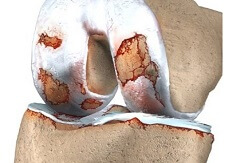
Best Diet For Arthritis
January 11, 2023
Top 15 Treatments
November 10, 2022
References
1. Biomed Central Musculoskeletal Disorders: What is the evidence to support early supervised exercise therapy after primary total knee replacement? A systematic review and meta-analysis. January 2019
2. British Medical Journal Open: Cost-effectiveness of enhanced recovery in hip and knee replacement: a systematic review protocol. March 2018
3. Physiotherapy Journal: New approach for the rehabilitation of patients following total knee arthroplasty. May 2015
